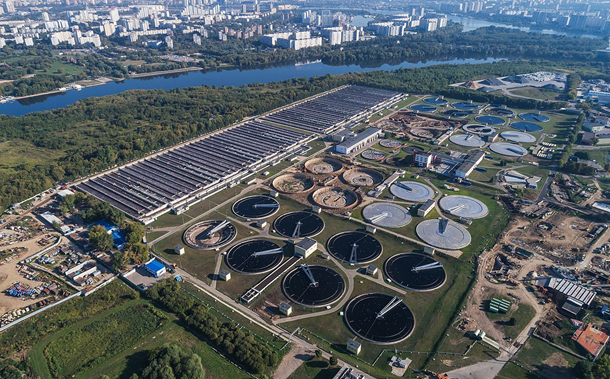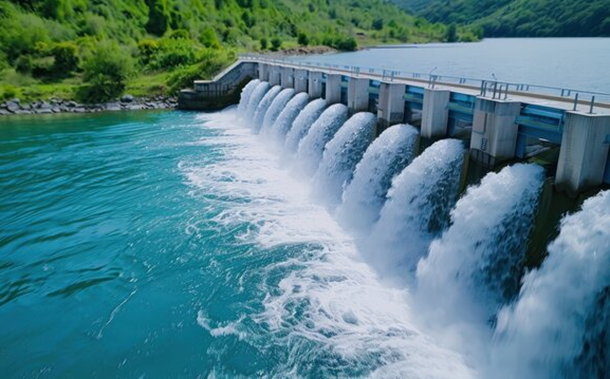Application of the Arrhenius Equation in Predicting the Temperature Susceptibility of Unmodified and Modified Bituminous Binder
Downloads
Doi:10.28991/CEJ-2024-010-03-015
Full Text:PDF
Downloads
[2] Padmarekha, A., & Krishnan, J. M. (2013). Viscoelastic Transition of Unaged and Aged Asphalt. Journal of Materials in Civil Engineering, 25(12), 1852–1863. doi:10.1061/(asce)mt.1943-5533.0000734.
[3] Nivitha, M. R., & Murali Krishnan, J. (2016). What is Transition Temperature for Bitumen and How to Measure It? Transportation in Developing Economies, 2(1), 1–8. doi:10.1007/s40890-015-0009-y.
[4] IS73. (2013). Paving Bitumen-Specification (4th REVISION). Bureau of Indian Standards, New Delhi, India.
[5] ASTM, D6373-21a. (2023). Standard Specification for Performance-Graded Asphalt Binder. ASTM International, Pennsylvania, United States. doi:10.1520/D6373-21A.
[6] Heukelom, W. (1969). A bitumen test data chart for showing the effect of temperature on the mechanical behavior of asphaltic bitumens. Institute of Petroleum, 55(5460), 404-417.
[7] Storm, D. A., Barresi, R. J., & Sheu, E. Y. (1996). Development of solid properties and thermochemistry of asphalt binders in the 25-65°C temperature range. Energy & Fuels, 10(3), 855–864. doi:10.1021/ef9502564.
[8] Nivitha, M. R., Prasad, E., & Krishnan, J. M. (2019). Transitions in unmodified and modified bitumen using FTIR spectroscopy. Materials and Structures/Materiaux et Constructions, 52(1), 1–11. doi:10.1617/s11527-018-1308-7.
[9] Williams, M. L., Landel, R. F., & Ferry, J. D. (1955). The Temperature Dependence of Relaxation Mechanisms in Amorphous Polymers and Other Glass-forming Liquids. Journal of the American Chemical Society, 77(14), 3701–3707. doi:10.1021/ja01619a008.
[10] Ferry, J. D. (1980). Viscoelastic properties of polymers. John Wiley & Sons, Hoboken, United States.
[11] Rajan, S., Sutton, M. A., Oseli, A., Emri, I., & Matta, F. (2017). Linear viscoelastic creep compliance and retardation spectra of bitumen impregnated fiberglass mat and polymer modified bitumen. Construction and Building Materials, 155, 664–679. doi:10.1016/j.conbuildmat.2017.08.030.
[12] Zoorob, S. E., Mturi, G. A., Sangiorgi, C., Dinis-Almeida, M., & Habib, N. Z. (2018). Fluxing as a new tool for bitumen rheological characterization and the use of time-concentration shift factor (AC). Construction and Building Materials, 158, 691–699. doi:10.1016/j.conbuildmat.2017.10.020.
[13] Lesueur, D. (2009). The colloidal structure of bitumen: Consequences on the rheology and on the mechanisms of bitumen modification. Advances in Colloid and Interface Science, 145(1–2), 42–82. doi:10.1016/j.cis.2008.08.011.
[14] Cheung, C. Y., &Cebon, D. (1997). Experimental study of pure bitumens in tension, compression, and shear. Journal of Rheology, 41(1), 45–74. doi:10.1122/1.550858.
[15] Atul Narayan, S. P., Murali Krishnan, J., Little, D. N., & Rajagopal, K. R. (2016). Mechanical behaviour of asphalt binders at high temperatures and specification for rutting. International Journal of Pavement Engineering, 18(10), 916–927. doi:10.1080/10298436.2015.1126272.
[16] Maze, M. (1996). Viscosity of EVA Polymer-Modified Bitumens: Modelling. No. 5170 Section 5. Euraspahlt&Eurobitume Congress, 7-10 May, 1996, Strasbourg, France.
[17] Salomon, D., & Zhai, H. (2002). Ranking asphalt binders by activation energy for flow. Journal of Applied Asphalt Binder Technology, 2(2), 52-60.
[18] Dongre, R., Myers, L., D'Angelo, J., Paugh, C., & Gudimettla, J. (2005). Field evaluation of Witczak and Hirsch models for predicting dynamic modulus of hot-mix asphalt (with discussion). Journal of the Association of Asphalt Paving Technologists, 74.
[19] Salomon, D., & Zhai, H. (2004). Asphalt binder flow activation energy and its significance for compaction effort. Proceedings of 3rdEuroasphalt&Eurobitume congress, 12-14 May 2004, Vienna, Austria.
[20] Saboo, N., Singh, B., & Kumar, P. (2019). Development of High-Temperature Ranking Parameter for Asphalt Binders Using Arrhenius Model. Journal of Materials in Civil Engineering, 31(12), 4019297. doi:10.1061/(asce)mt.1943-5533.0002965.
[21] Garća-Morales, M., Partal, P., Navarro, F. J., MartÌnez-Boza, F., Gallegos, C., González, N., González, O., & Muñoz, M. E. (2004). Viscous properties and microstructure of recycled EVA modified bitumen. Fuel, 83(1), 31–38. doi:10.1016/S0016-2361(03)00217-5.
[22] Ait-Kadi, A., Brahimi, B., &Bousmina, M. (1996). Polymer blends for enhanced asphalt binders. Polymer Engineering & Science, 36(12), 1724–1733. doi:10.1002/pen.10568.
[23] Wang, H., Liu, X., Apostolidis, P., & Scarpas, T. (2018). Rheological behavior and its chemical interpretation of crumb rubber modified asphalt containing warm-mix additives. Transportation Research Record, 2672(28), 337–348. doi:10.1177/0361198118781376.
[24] Jamshidi, A., Hamzah, M. O., Shahadan, Z., & Yahaya, A. S. (2015). Evaluation of the Rheological Properties and Activation Energy of Virgin and Recovered Asphalt Binder Blends. Journal of Materials in Civil Engineering, 27(3), 4014135. doi:10.1061/(asce)mt.1943-5533.0001024.
[25] Luo, X., Gu, F., & Lytton, R. L. (2019). Kinetics-based aging prediction of asphalt mixtures using field deflection data. International Journal of Pavement Engineering, 20(3), 287–297. doi:10.1080/10298436.2017.1293262.
[26] Luo, X., Gu, F., & Lytton, R. L. (2015). Prediction of field aging gradient in asphalt pavements. Transportation Research Record, 2507(1), 19–28. doi:10.3141/2507-03.
[27] Haider, S. W., Mirza, M. W., Thottempudi, A. K., Bari, J., &Baladi, G. Y. (2011). Characterizing Temperature Susceptibility of Asphalt Binders Using Activation Energy for Flow. Transportation and Development Institute Congress 2011. doi:10.1061/41167(398)48.
[28] Notani, M. A., Arabzadeh, A., Satvati, S., TarighatiTabesh, M., GhafariHashjin, N., Estakhri, S., & Alizadeh, M. (2020). Investigating the high-temperature performance and activation energy of carbon black-modified asphalt binder. SN Applied Sciences, 2(2), 1–12. doi:10.1007/s42452-020-2102-z.
[29] Raouf, M. A., & Williams, R. C. (2010). Temperature and shear susceptibility of a nonpetroleum binder as a pavement material. Transportation Research Record, 2180(2180), 9–18. doi:10.3141/2180-02.
[30] Ingram, L., Mohan, D., Bricka, M., Steele, P., Strobel, D., Crocker, D., Mitchell, B., Mohammad, J., Cantrell, K., & Pittman, C. U. (2008). Pyrolysis of wood and bark in an auger reactor: Physical properties and chemical analysis of the produced bio-oils. Energy and Fuels, 22(1), 614–625. doi:10.1021/ef700335k.
[31] ASTM D2872-22. (2022). Standard Test Method for Effect of Heat and Air on a Moving Film of Asphalt (Rolling Thin-Film Oven Test). ASTM International, Pennsylvania, United States. doi:10.1520/D2872-22.
[32] ASTM D6521-22. (2022). Standard Practice for Accelerated Aging of Asphalt Binder Using a Pressurized Aging Vessel (PAV). ASTM International, Pennsylvania, United States. doi:10.1520/D6521-22.
[33] Kalelkar, C., Lele, A., & Kamble, S. (2010). Strain-rate frequency superposition in large-amplitude oscillatory shear. Physical Review E - Statistical, Nonlinear, and Soft Matter Physics, 81(3), 31401. doi:10.1103/PhysRevE.81.031401.
[34] ASTM D7405. (2015). Standard Test Method for Multiple Stress Creep and Recovery (MSCR) of Asphalt Binder Using a Dynamic Shear Rheometer. ASTM International, Pennsylvania, United States.
- Authors retain all copyrights. It is noticeable that authors will not be forced to sign any copyright transfer agreements.
- This work (including HTML and PDF Files) is licensed under a Creative Commons Attribution 4.0 International License.![]()














